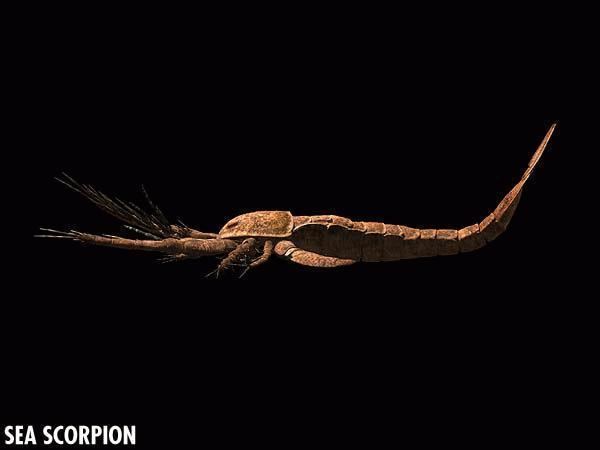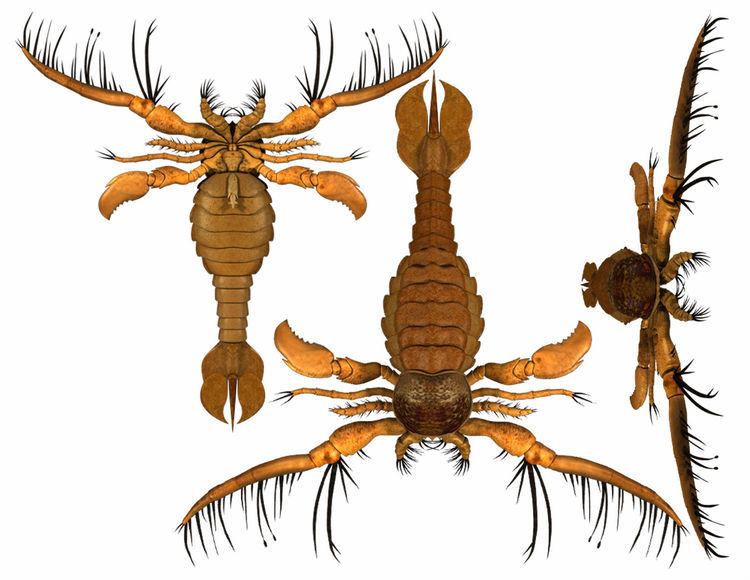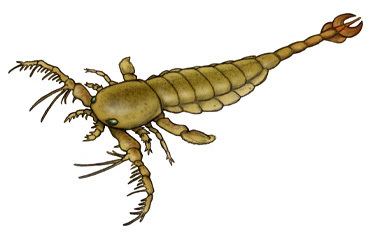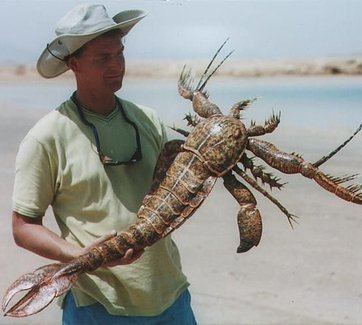Class Merostomata Rank Genus | Superfamily †Megalograptoidea Order Eurypterid | |
 | ||
Similar Eurypterid, Cameroceras, Pterygotus, Jaekelopterus, Eurypterus | ||
Megalograptus (Greek for "big writing") is a 4-foot-long (1.2 m) Ordovician eurypterid (sea scorpion), and was among the earliest known genera (and was a member of the family Megalograptidae). The generic name is derived from the fact that its first fossils were of its very spiny legs, which were mistaken for massive graptolites. It lived from 460 to 445 mya. Megalograptus preyed on fish, trilobites, other sea scorpions, and smaller orthocones, using the spines on their claws to feel for their prey hiding in the sand and mud. Adult Cameroceras, along with the bigger sea scorpion species, preyed on it. Megalograptus did not have a stinger, but may have curled its tail and sword-like telson forward as a threat pose, much like a scorpion.
Contents

Raptorex vs megalograptus
Description

Megalograptids were characterized by large exoskeletons with ovate to triangular scales. The prosoma (head) was subquadrate, with a tongue-like anterior process bearing marginal spines, and compound eyes on the top front of the head. The chelicerae (claws in front of the mouth) were small and short. The first and third pairs of walking legs were short, with diverging or closely spaced spines. The second pair of walking legs was enormously developed, with long paired spines. The fourth pair of walking legs was nearly spineless. The preabdomen, the front portion of the body, was narrow with axial furrows, while the postabdomen was moderately narrow with broad, flat and curved appendages on the last body segment. The telson was short and lanceolate.

Megalograptus is distinguishable from other members of the family by the third walking legs, which are characterized by short diverging spines.


